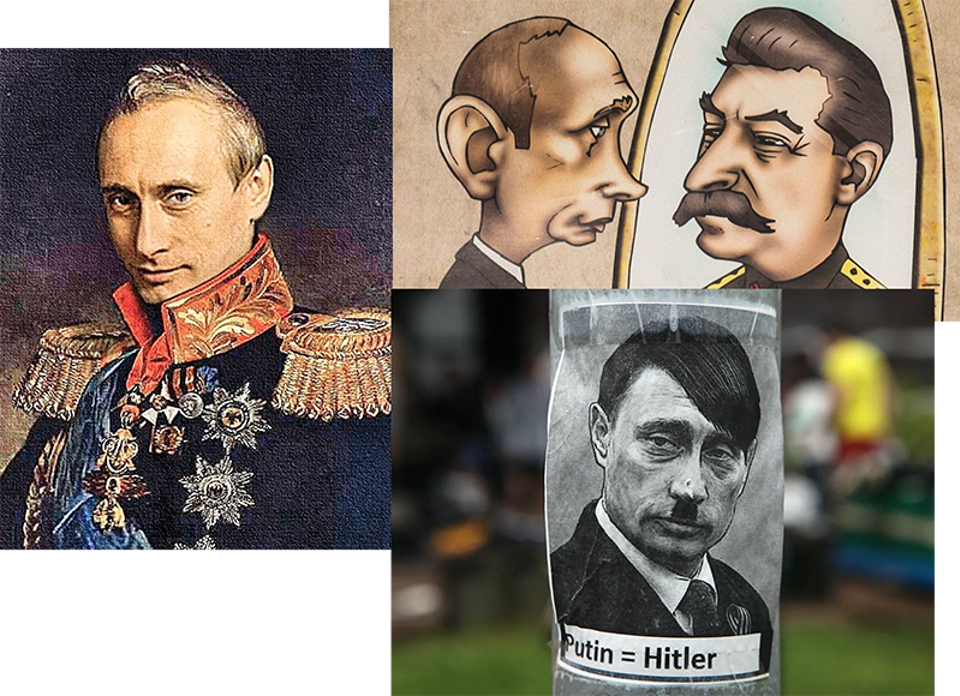They see themselves as father figures
Keynote speaker Professor Michèle Lowrie from the University of Chicago got the ball kicking with a flashback to Donald Trump’s infamous video message to his supporters during the Capitol Attack in January 2021: “Go home. We love you. You’re very special.” Unpicking the implicit messages of the video, she reminded us of the uncomfortable proximity of love and domination: indeed, it seems to be a mainstay of autocratic rhetoric that the autocrat’s care for and benevolence towards the people – or at least those he deems the “real” people – justifies his position as sovereign; that is, his power to legally set aside the law. He, after all, is the only one who really cares. The Roman emperors, as is well-known, were habitually portrayed as such caring, yet strict father figures, though – as Ellen O’Gorman discussed in her paper – the father-children metaphor was not the only way to conceptualise the power of the emperors, the doctor-patient metaphor and the herdsman-flock metaphor being particularly popular.
Autocratic regimes portray themselves as inevitable
Another take on the autocrat as benevolent father figure was offered by Irem Tuncer-Ebetürk (Berlin Social Science Center) and Defne Över (Texas A&M University), who in their discussion of Erdogan’s public image brought our attention to his habitual confiscation of cigarettes (now exhibited inside the presidential palace) as well as his occasional pardoning of those condemned for insulting the president, that is, for insulting him. This latter point provided another bridge between the ancient and the modern, as we can read in the works of the Roman historian Tacitus how the Emperor Nero once lost his temper when a senator who had been accused for the sole purpose of allowing Nero to pardon him was released by the senate with a mild warning – thus preventing Nero from showcasing his “clemency”.
Whereas most speakers were from abroad (Germany, Norway, Egypt, Sweden, Turkey, Italy, the UK, and the US), the conference also provided AAU-based historians and political scientists with a chance to disseminate their research in an interdisciplinary setting: Carsten Hjort Lange offered a timely warning about how we often approach “autocrats” with our own personal and political prejudices, Aske Damtoft Poulsen noted how autocratic regimes frequently seek to portray themselves as inevitable – or at least necessary for the maintenance of law and order – and Casper Sakstrup got a lively discussion going about how personalist autocracies have a stronger tendency to wage foreign wars.
The presence of a threat
Another highlight was Marzia Fiorentini’s (Sapienza Università, Rome) talk on child emperors in the late Roman Empire: For if the autocrat himself can be merely a placeholder, what does that tell us of what an autocracy needs to function? An answer may perhaps be found in Han Lamers’ (Oslo University) presentation on how the institutionalised performance of love and loyalty towards the ruler, in this case Mussolini, brought a sense of unity to the Italian Fascist regime.
Another key element seems to be the presence of a threat, whether internal or external – or, as Matthew Blackburn (Norwegian Institute of International Affairs) demonstrated is the case in contemporary Russia, an internal threat portrayed as a weapon funded by external actors. For whereas the Roman Empire lacked a powerful rival and therefore had to resort to ghosts from the past (most notably those who had assassinated Julius Caesar) to legitimise repression in the present, contemporary autocratic regimes frequently define themselves in opposition to an outside political system and culture – not least the so-called Western world.
Finally, the conference introduced a new word into the English language: “cakeism” is an attempt to have two mutually exclusive things at the same time. Example sentence: The Roman senator Pliny the Younger’s portrayal the Roman Empire as simultaneously peaceful and on the brink of civil war before Trajan’s accession to the throne is an excellent example of cakeism. Pliny has his cake and eats it too.
The conference practicalities were expertly handled by Bo Møller Lange, in unison with a group of dedicated students in the history programme. Even the Italians praised the food.

